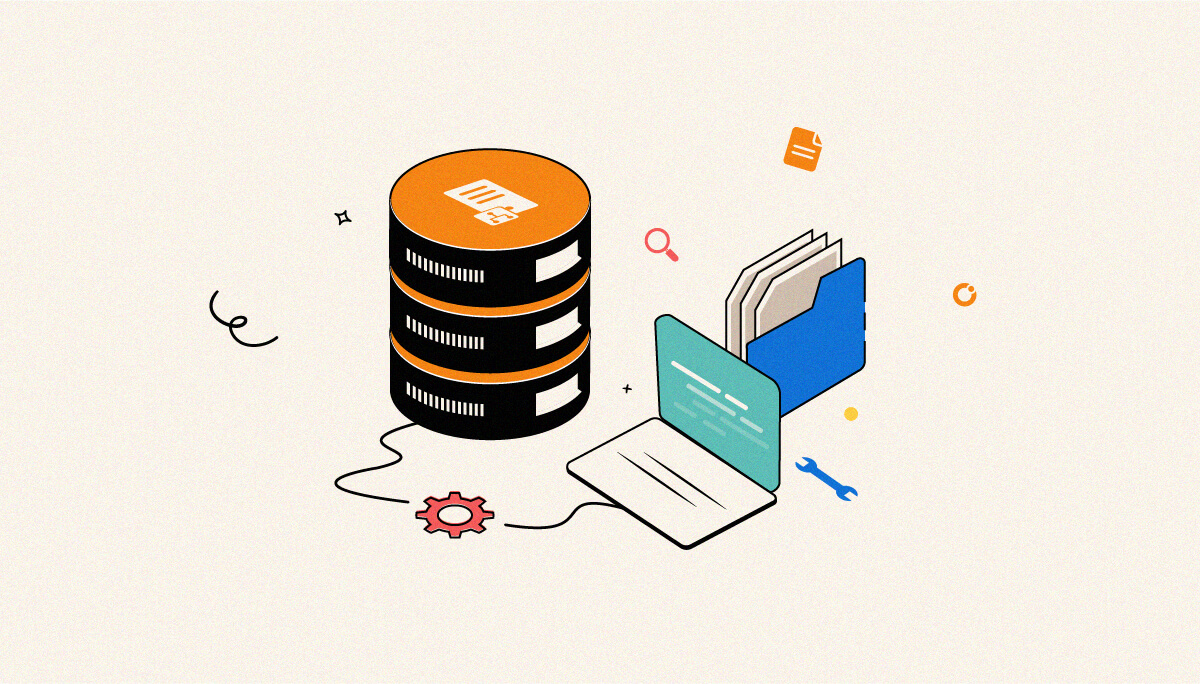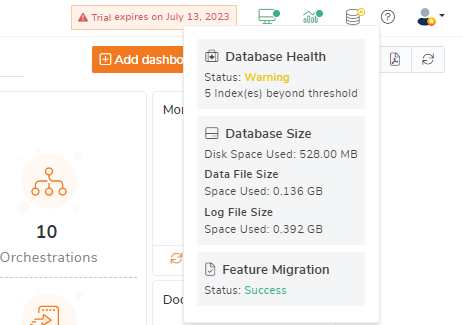
What is database health? To my knowledge, it is how well your database functions. In other words, how smooth is the database jobs done is referred to as database health. Although database performance and health are not the same, performance is crucial to a stable system or application.
You may have an excellent product that helps a critical business or a common user. If you don’t maintain the database, it will mess up the application. Let us understand how the application’s performance depends on database health and how BizTalk360 is handling database health.
From the ages to now, the application functionality hasn’t changed. The application works in the same components below.
The application and its storage have just shifted from on-premises to the cloud. The functionality remains the same as the storage is still dependent on the database. Examining whether the resource is existing, is obvious, and is reachable is only the beginning of the health assessment.
When a resource is checked, it is ensured that it can carry out the tasks the programme needs (i.e., that it meets those requirements).

To correctly handle the incoming requests, each backend-side programme requires communication with a variety of external resources. A database to query on, a rest API to use, a queue to put an item into, etc. are all examples of resources in question that are separate from the application itself. The application cannot function effectively without these resources being fully functioning and available.
When the database size increases propositionally the resources should be allocated for applications’ smooth functioning. Increasing resources cannot be done easily or quite frequently because it causes downtime and effort (in changing the hardware like RAM, CPU Cores, and database size). That’s where Cloud management came in effectively to handle those pressures.
But increasing the resources is not one of the permanent solutions (other than the peak time of the month sales like Christmas shopping), we must look if this is happening in a lean month. That makes database maintenance is most important in handling the healthy application itself.
To correctly handle the incoming requests, each backend-side program requires communication with a variety of external resources. A database to query on, a rest API to use, a queue to put an item into, etc. are all examples of resources in question that are separate from the application itself. The application cannot function effectively without these resources being fully functioning and available.
When the database size increases propositionally the resources should be allocated for applications’ smooth functioning. Increasing resources cannot be done easily or quite frequently because it causes downtime and effort (in changing the hardware like RAM, CPU Cores, and database size). That’s where Cloud management came in effectively to handle those pressures.
But increasing the resources is not one of the permanent solutions (other than the peak time of the month sales like Christmas shopping), we must look if this is happening in a lean month. That makes database maintenance is most important in handling the healthy application itself.
Database maintenance is a vast topic. In the future, we shall have another detailed blog or a series of blogs about general database health maintenance. To know about BizTalk Environment Maintenance, refer to the blog here.
A database’s correct operation is ensured through a collection of practices called database maintenance. Database management solutions need to be updated frequently to keep up with emerging technologies and security threats.
Usually, the following can be used to check the health of a database:
Every network owner or administrator must prioritise database or data maintenance. A sound data maintenance practice has a lot of benefits. This explains why top organisations don’t skip out on putting in place an effective maintenance strategy.
Some of the advantages of database upkeep are listed below.

As we have witnessed the benefits are high in database health maintenance, so how come the BizTalk360 will leave to utilize the benefits that can provide to the customers? Due to the fact that BizTalk360 is an on-premises software, a database is built when the product is installed. In order to prevent performance issues, it is always a good idea to take proper care of the database and the data.
So BizTalk360 has maximized the efforts to keep the database healthy with its own features. Some tools have been available to maintain the database inbuilt let’s have a brief look at each feature.
BizTalk360 gathers and keeps a variety of data like event logs, performance counters, etc. The data flow will be high when there are added more environments (let’s say more BizTalk, SQL, SSO), and BizTalk360 data collection will be high when you enable/use more features. BizTalk360 comes pre-configured with the ability to define a purging period with a custom date where you may adjust the number of days based on your data flow is called Data Purging.
This prevents the BizTalk360 database from growing too large. After a predetermined amount of time, the background monitoring service can automatically delete older data.
As we have seen in the data purging, the BizTalk360 database will grow due to factors such as utilizing/enabling more features. Database fragmentation may increase in that case, which would slow down the BizTalk360 database’s ability to execute SQL queries.
The database maintenance feature will provide information about the condition of the BizTalk360 database and assist the user in rebuilding or reorganizing the table indexes when they reach a predetermined threshold.
Based on this threshold value scheme, the indexes and their status and any necessary actions like rebuilding or reorganising are listed. The action against fragmented indexes will be taken automatically by the BizTalk360 system. Users can schedule an action to be performed just at that certain time by creating a schedule.

Those who were using the BizTalk360 must be aware of the Manage services segment. The Windows services BizTalk360 Monitor and Analytics are included with BizTalk360 and used for monitoring, operations, and gathering performance statistics. Sub-services that oversee carrying out the various operations are contained within these services in turn.
A scenario where the sub-services encounter a difficulty that leads to exceptions is possible. When a service exception occurs while it is running, the Manage Services section displays the specifics, allowing you to assess the service’s overall health. Keeping an eye on this feature will help you to run the BizTalk360 for smooth functioning.
You can view the size of the BizTalk360 database and view the status by setting the threshold limits. The status of the health will be shown in the notification icon. You can see the status of the database by selecting the Database health icon in the top right corner. It will show the status of the Database size monitoring along with the Index health.
To enable the BizTalk360 health view, navigate to BizTalk360 settings -> System settings -> Global Configuration -> BizTalk360 database size. Now change the values and hit the Save option to save the values.

You can also monitor the size of the BizTalk360 and BizTalk dependent database size by setting up the Database size monitoring. So that you can keep track of the database growth.


This will help to minimize CPU and RAM usage, thus helping us to improve the performance of the database queries.
The database maintenance has been improved, and the data gathering into the BizTalk360 database has been tweaked considering user input.
It is always a good idea to check the basic database reports whenever the database expands faster than anticipated. The table that takes up the most area will be determined by this. Then, to keep the database in good shape, we can put the purging policy into practice and modify it in accordance with business requirements and data flow.
We hope this article gives you brief information about how BizTalk360 efficiently handles database maintenance. As you have noted BizTalk360 have almost covered all the key metrics of the health checks like improving the Performance of queries, Index effectiveness, and Maintenance of data.
The Data Security, Migrations, Upgrades, and Availability were also handled by BizTalk360. We will always keep improving the customer experience and benefits.
Happy monitoring with BizTalk360! To know more about the BizTalk360 features, try out free trial or book a demo.